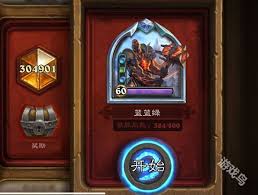In the world of Hearthstone, Death Knight cards have attracted the attention of countless players with their unique rune system. Runes not only add strategic depth to the game, they also make Death Knight deck building more diverse and challenging.
In Hearthstone, Death Knight cards are often accompanied by a colored symbol next to their mana cost, which is the rune. There are three types of runes: red represents blood, blue represents frost, and green represents evil. Each rune represents a specialization direction of the death knight and determines the cards that can be selected when building a deck.

Specific gameplay guide:
- Rune combination: Players can arbitrarily combine these three runes when building a deck. You can choose to use all of the same runes (e.g. three blood runes), or you can focus primarily on one rune while pairing it with others (e.g. two evil and one frost).
- Rune effects: Blood runes are known for their toughness. Most of their cards have field control effects, large minions, and can even control the upper limit of health. Frost runes have strong explosive potential, and the cards include direct damage, Card checking, mana control and freezing effects; evil runes are good at controlling the undead army. Most of the cards are summoning undead followers, large groups of followers and generating and using corpses.
- Rune Strategy: Generally, the more a player focuses on a certain rune, the more they can take advantage of that rune's specialization areas. However, sometimes the use of minor runes can mask the flaws of the major runes. For example, the Blood Rune system generally only has a small number of large minions, and the Evil Rune can help generate corpses to make up for this shortcoming.
When building a deck, the runes selected by the player will automatically update the cards that can be added to the deck. You can select "Show all runes" or cancel this option. At this time, the construction interface will dynamically filter cards and automatically hide cards that are incompatible with the rune selection. Through the "rune:xxx" method, you can filter the card collection according to the rune, where "x" can be "blood", "ice" or "evil".
Decks with different rune combinations have their own advantages. For example, a deck with mining as its core strategy may focus more on blood runes to provide powerful field control effects; while players pursuing explosive output may choose a deck based on frost runes. Evil runes are excellent at summoning undead armies and are suitable for players who like large groups of minions.
The rune system not only enriches the strategy of Death Knight cards, but also ensures that there will be no all-powerful decks. Each rune focuses on specific types of cards and effects, so players need to carefully consider the selection and combination of runes when building a deck, so as to develop more reasonable and effective tactics.
By mastering the red, green, and blue rune restrictions in Hearthstone, players can build more diverse and powerful death knight decks and achieve better results in the game.